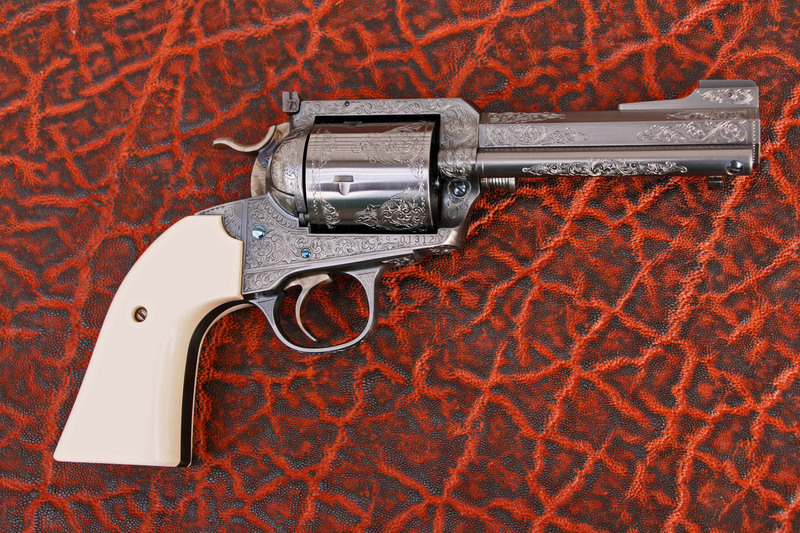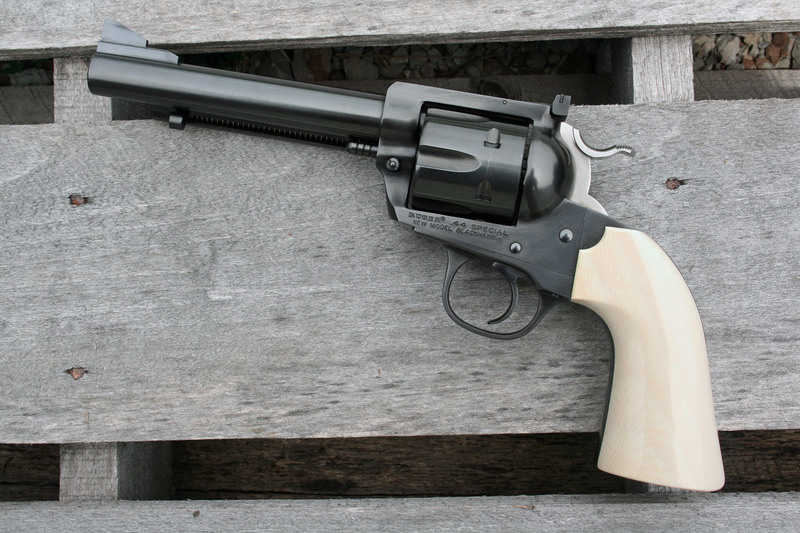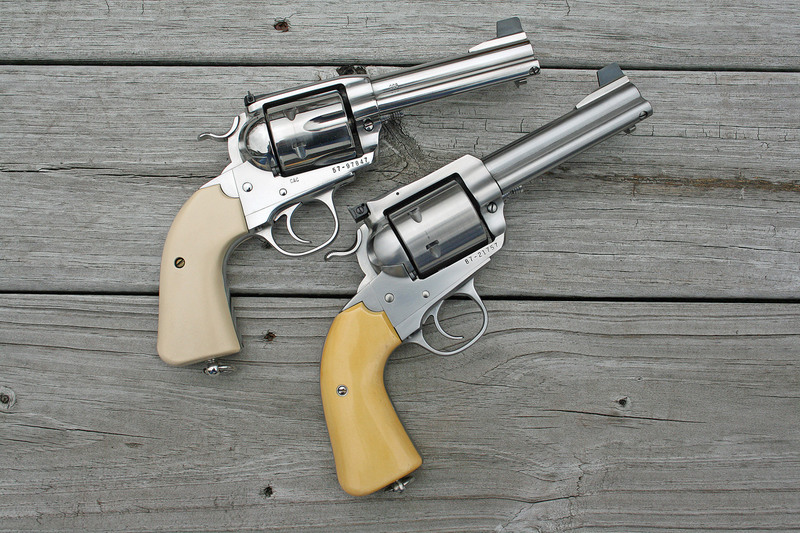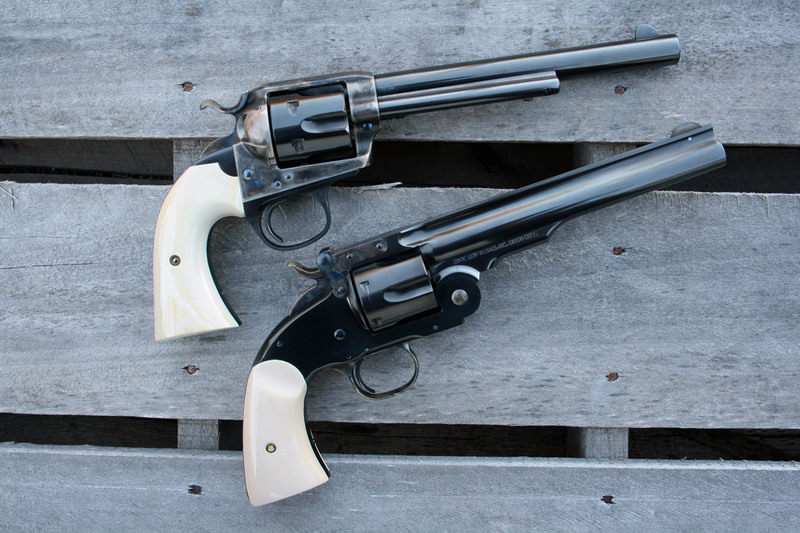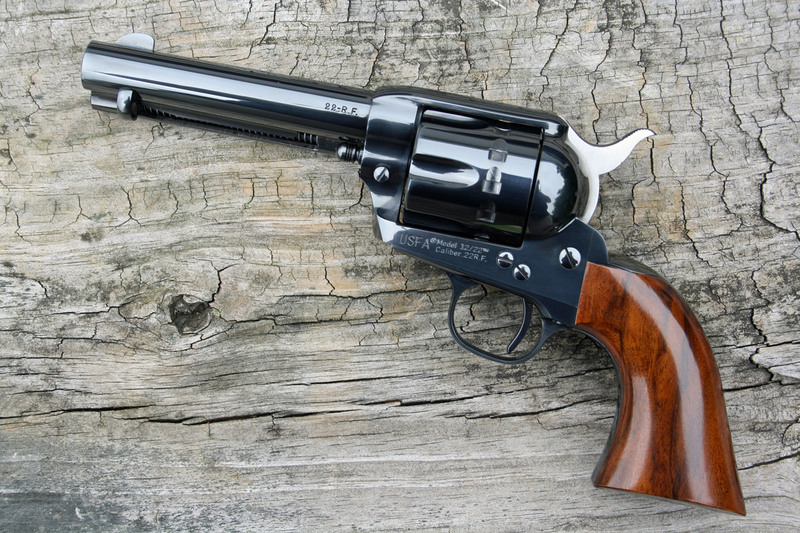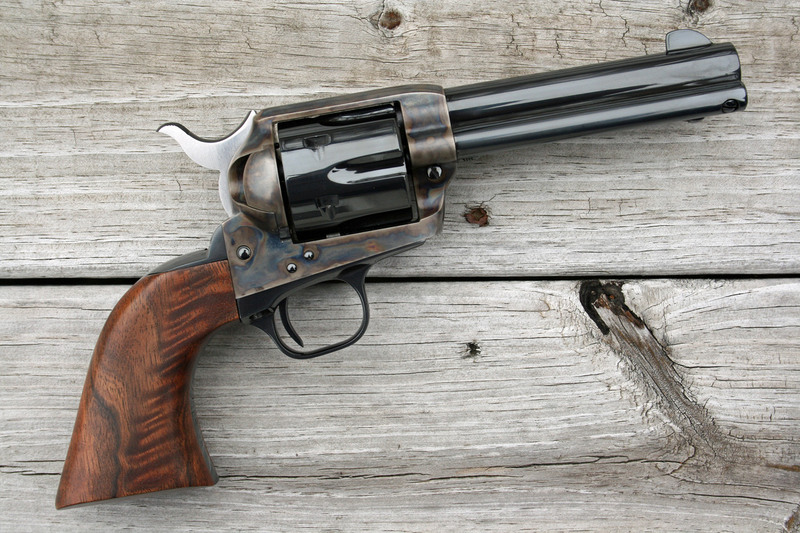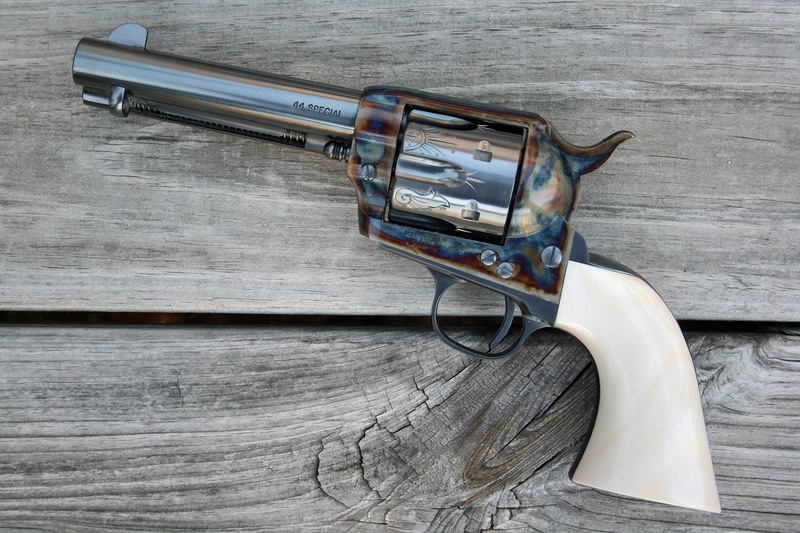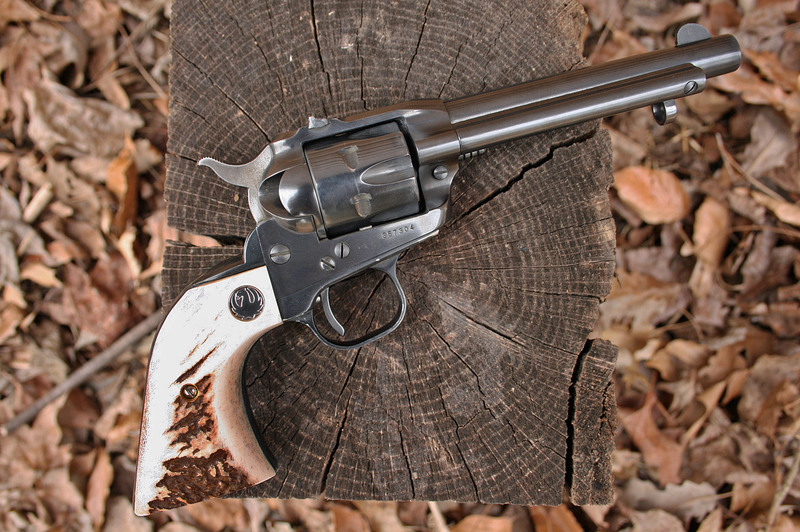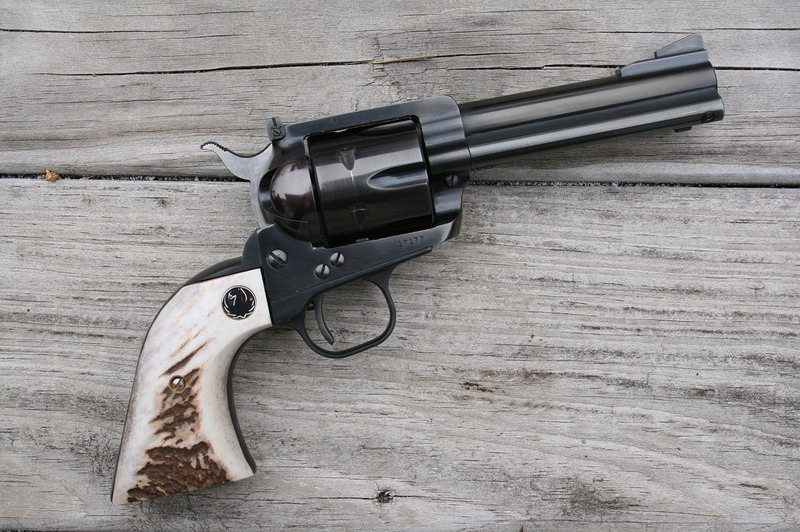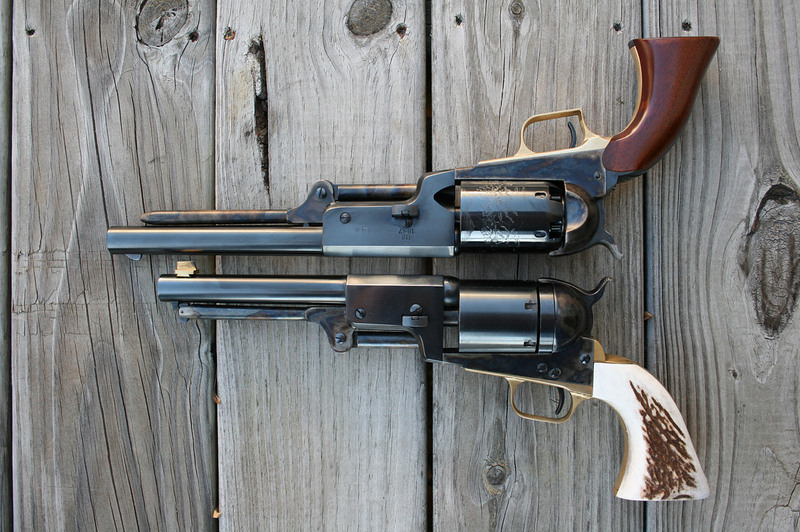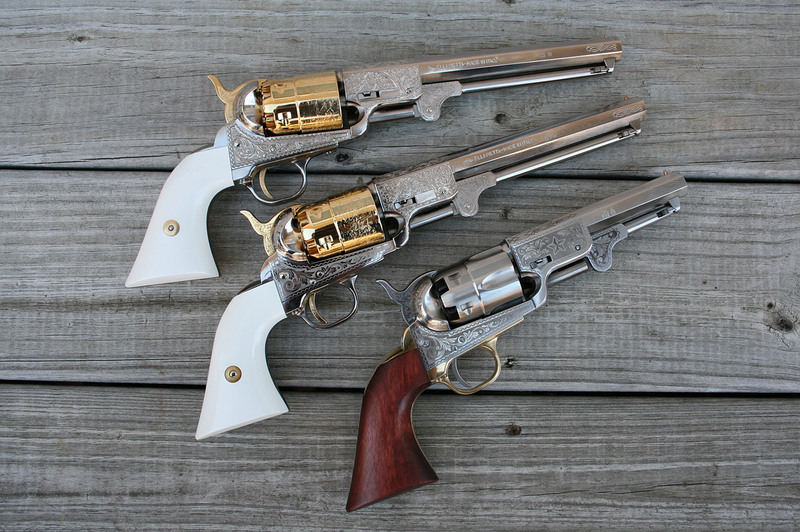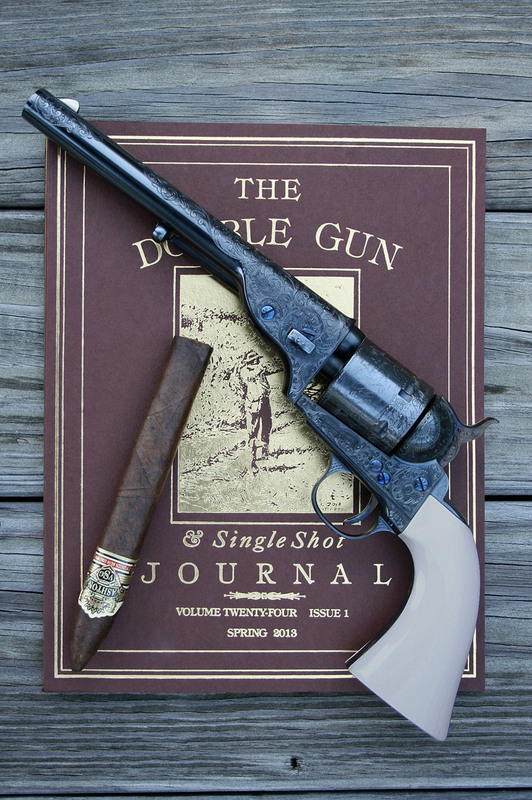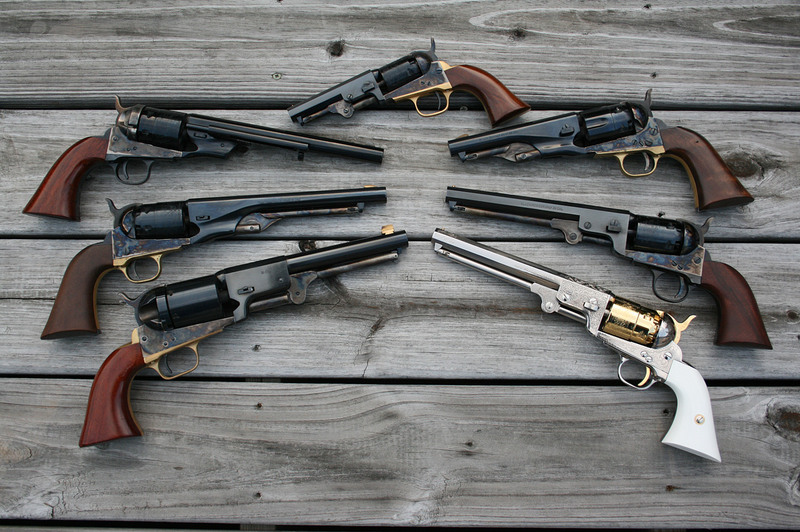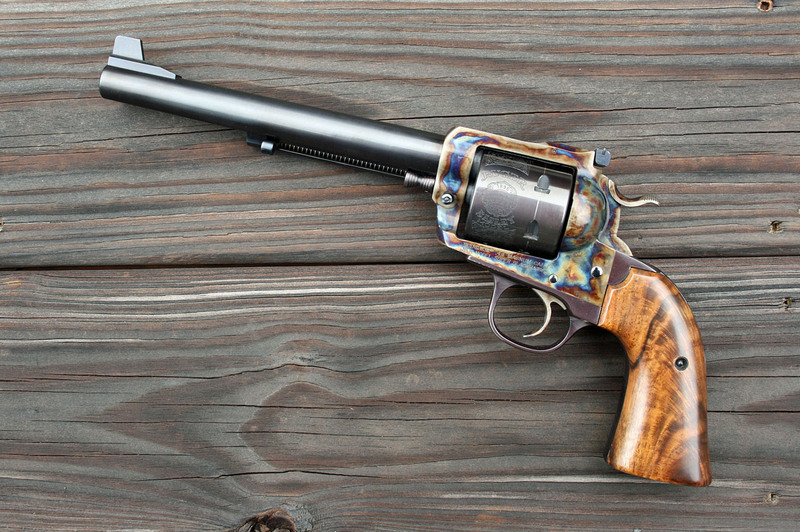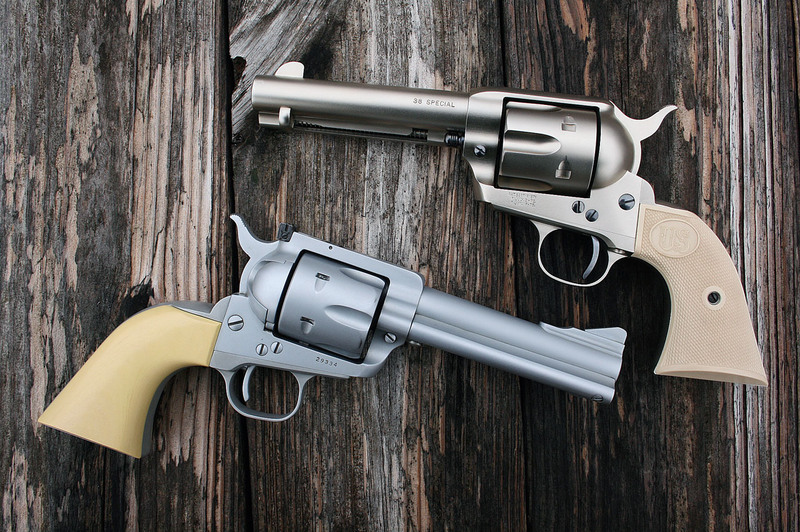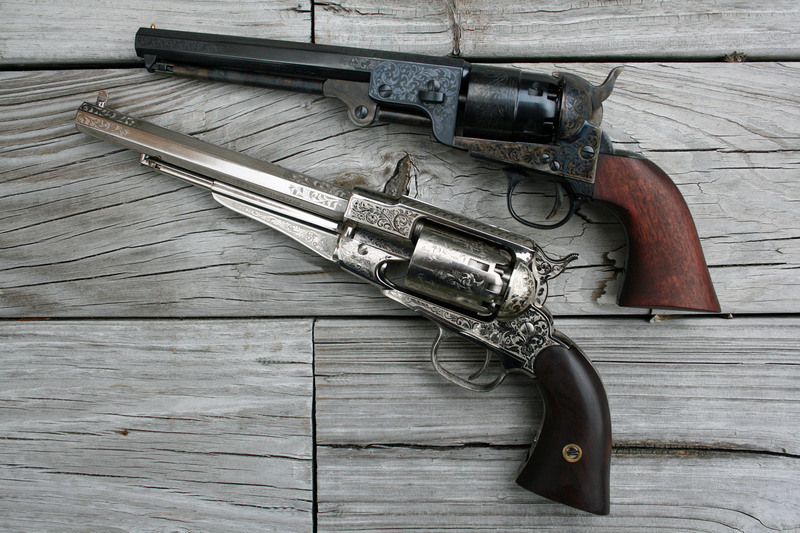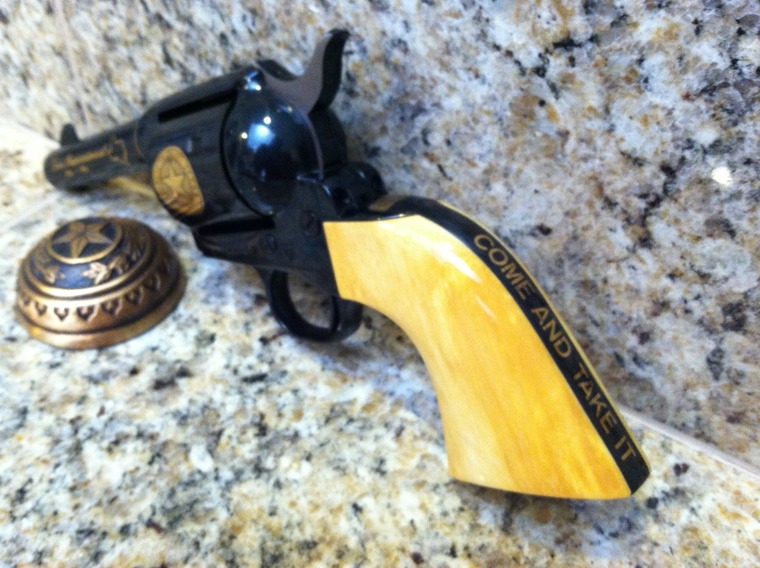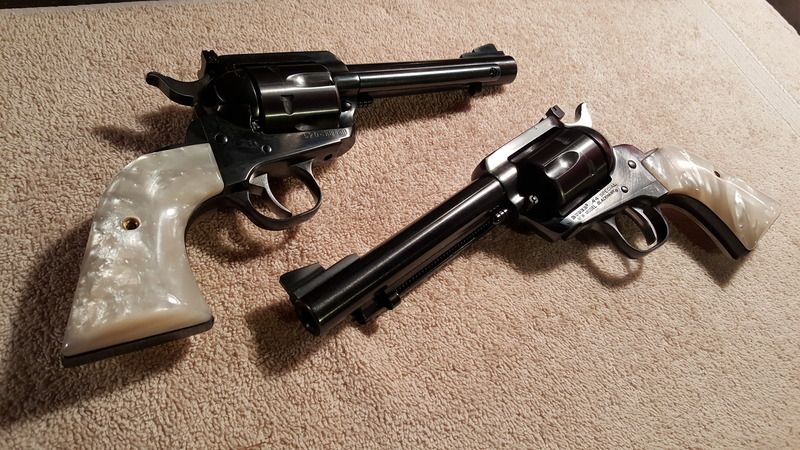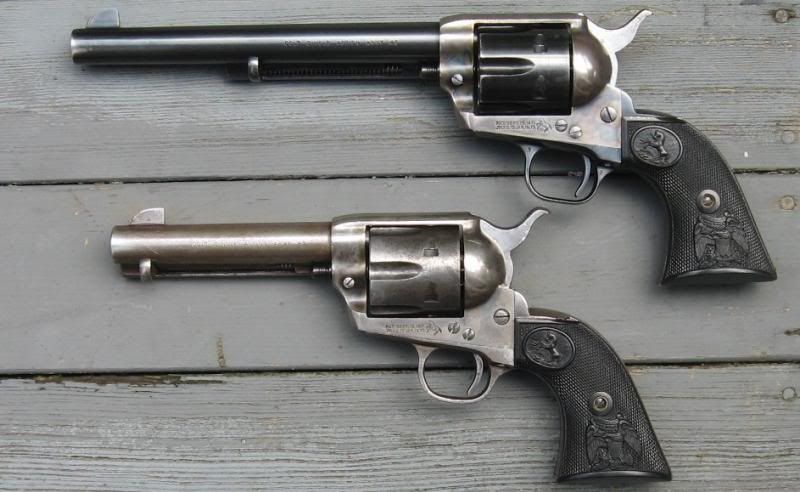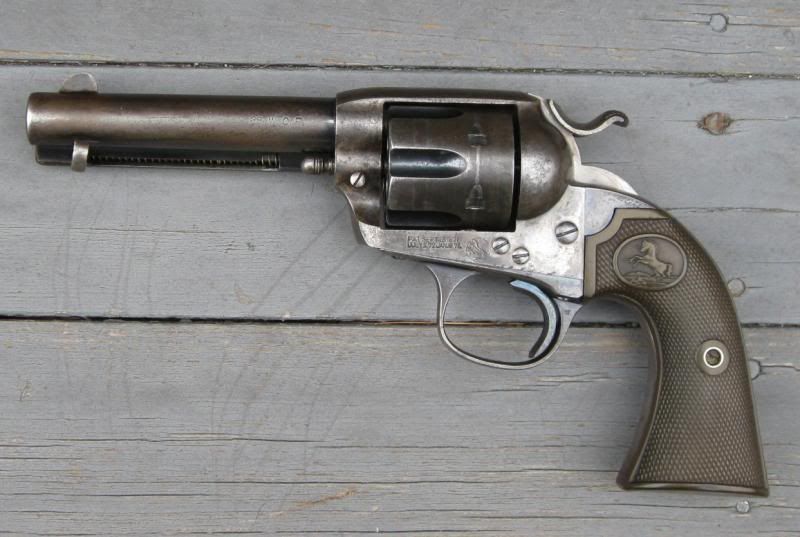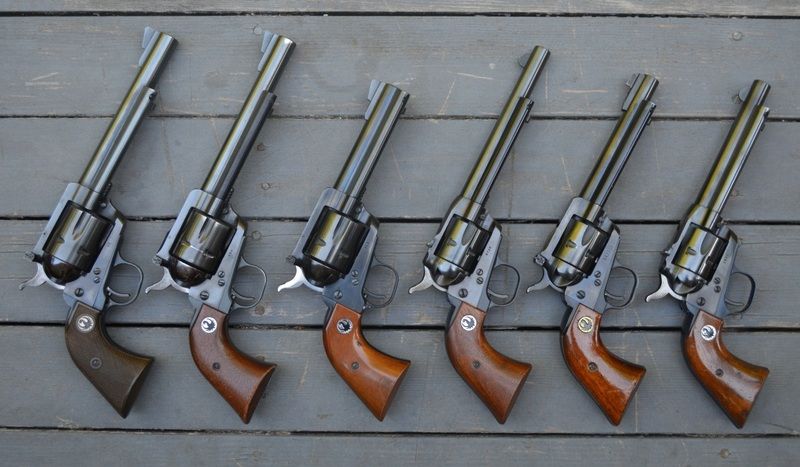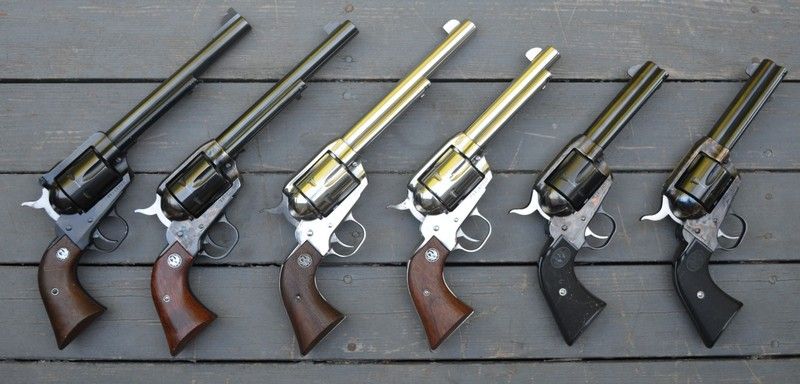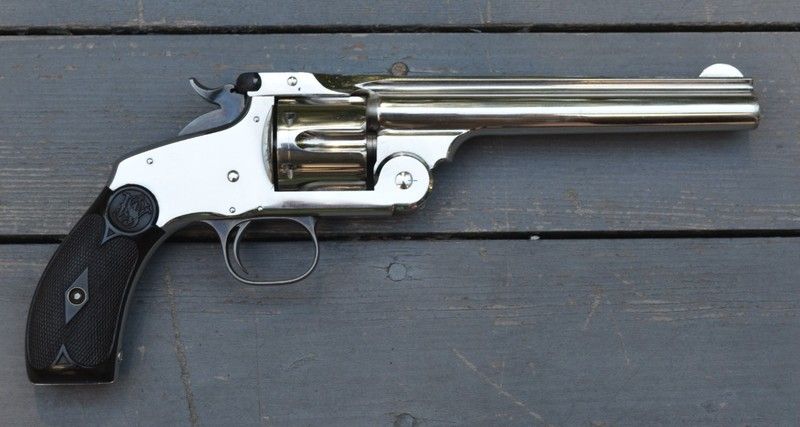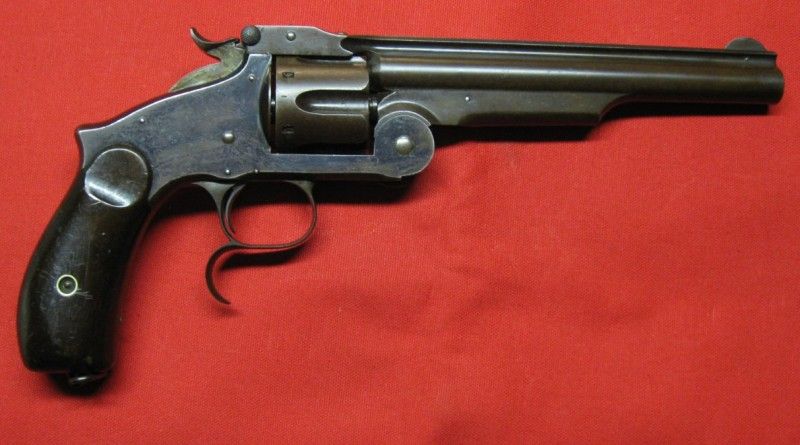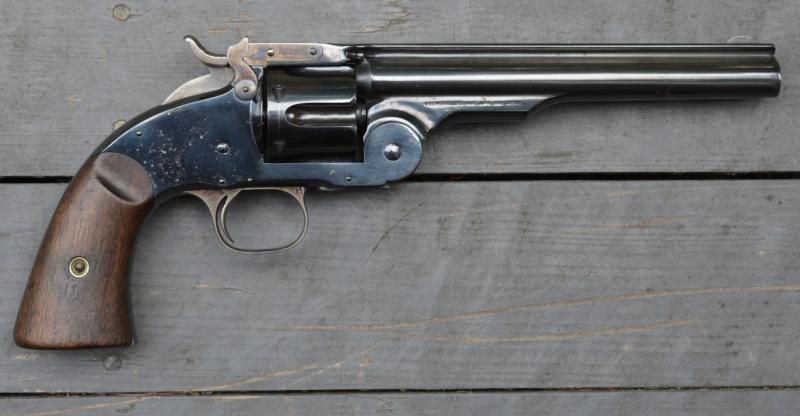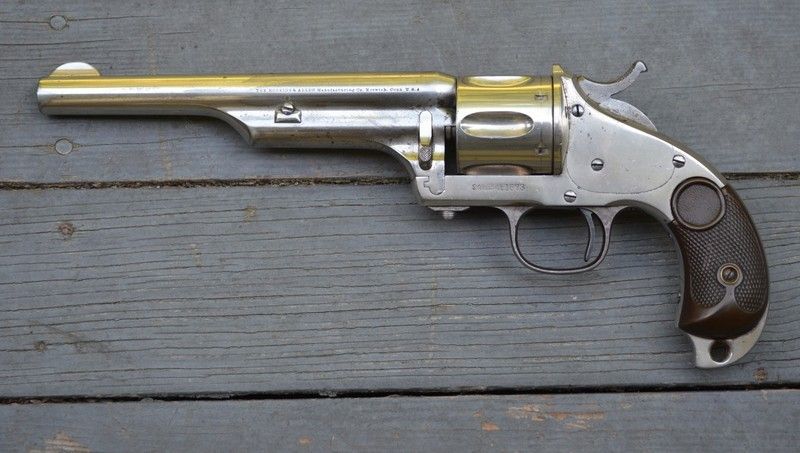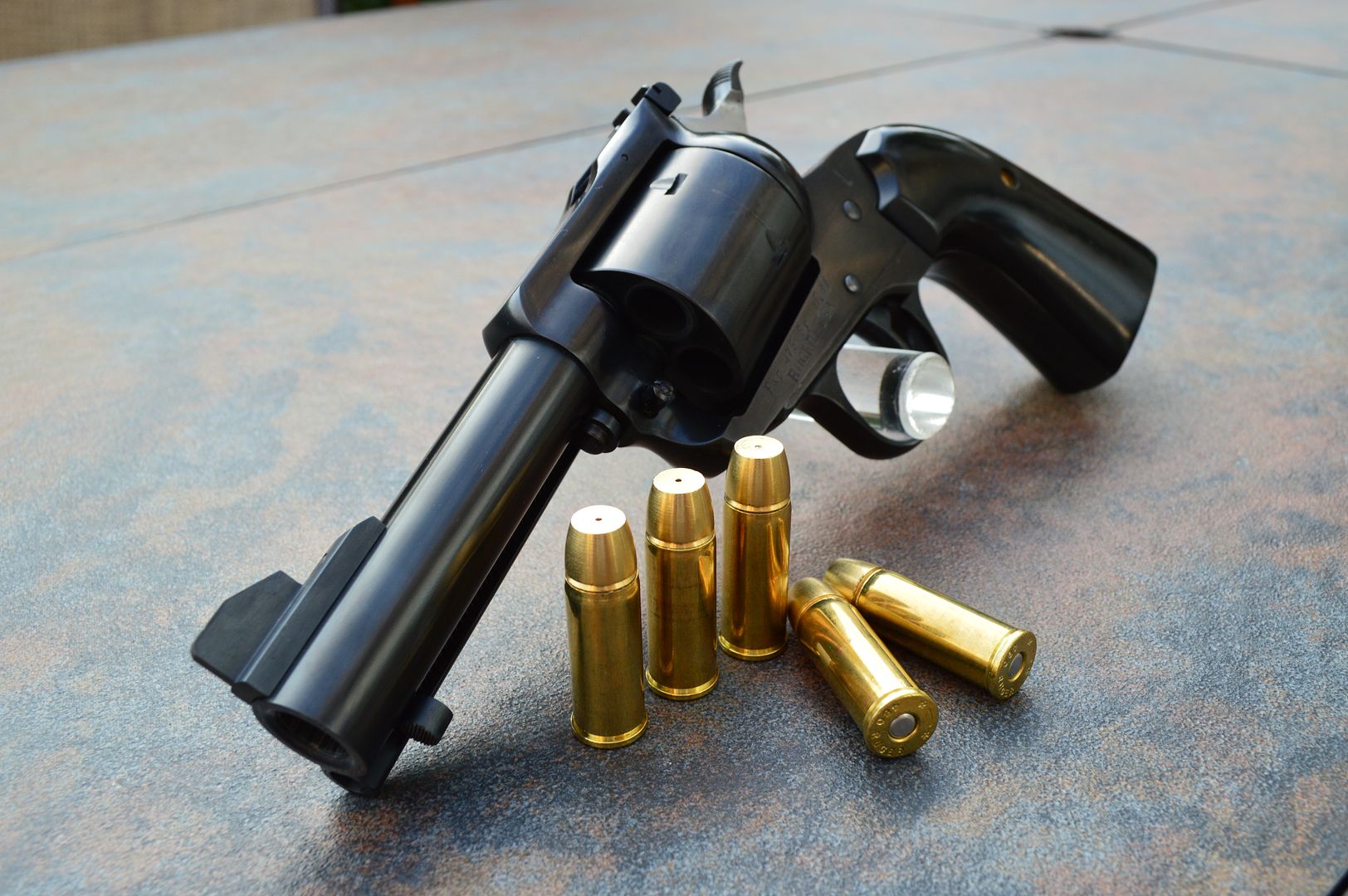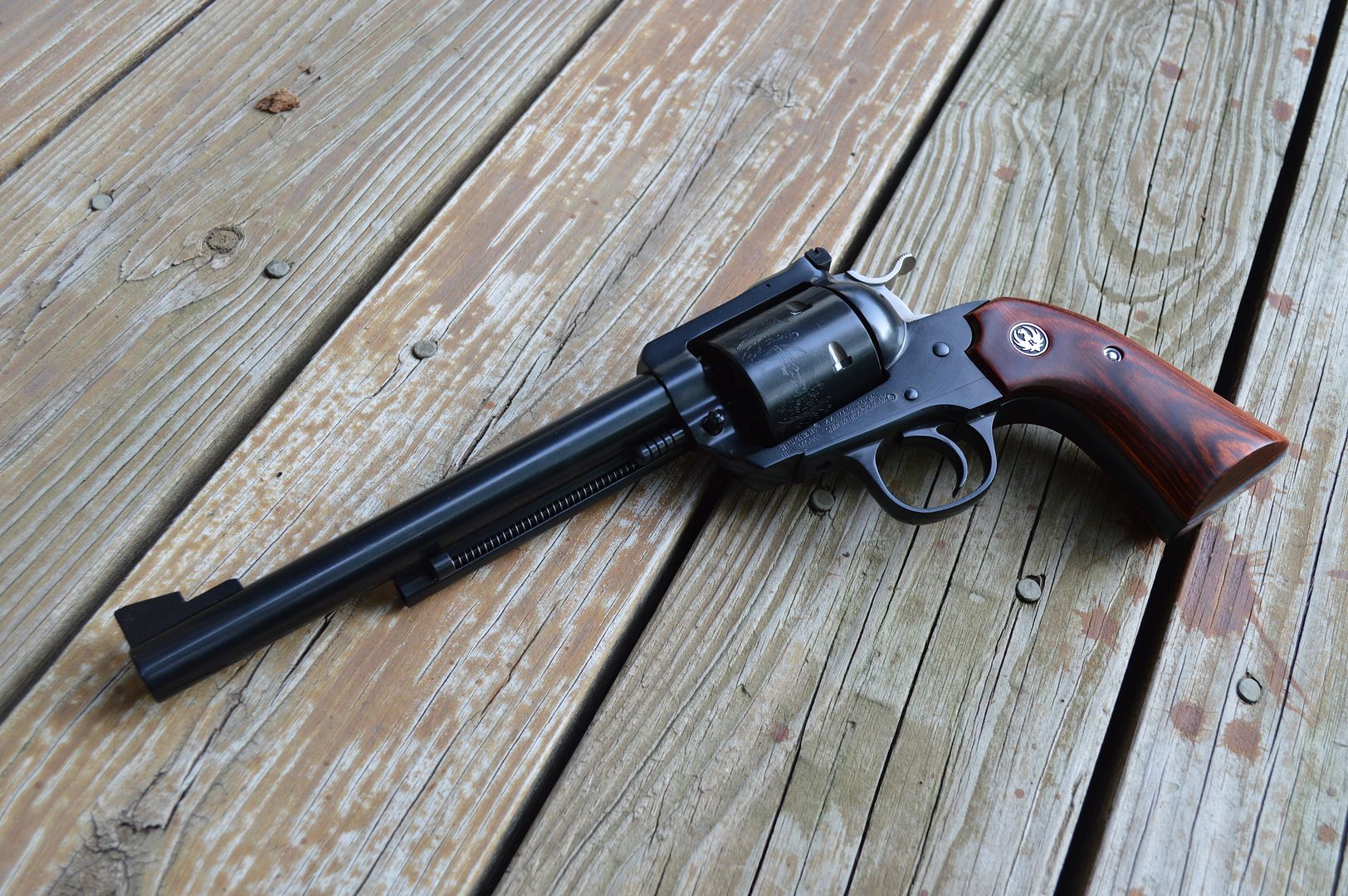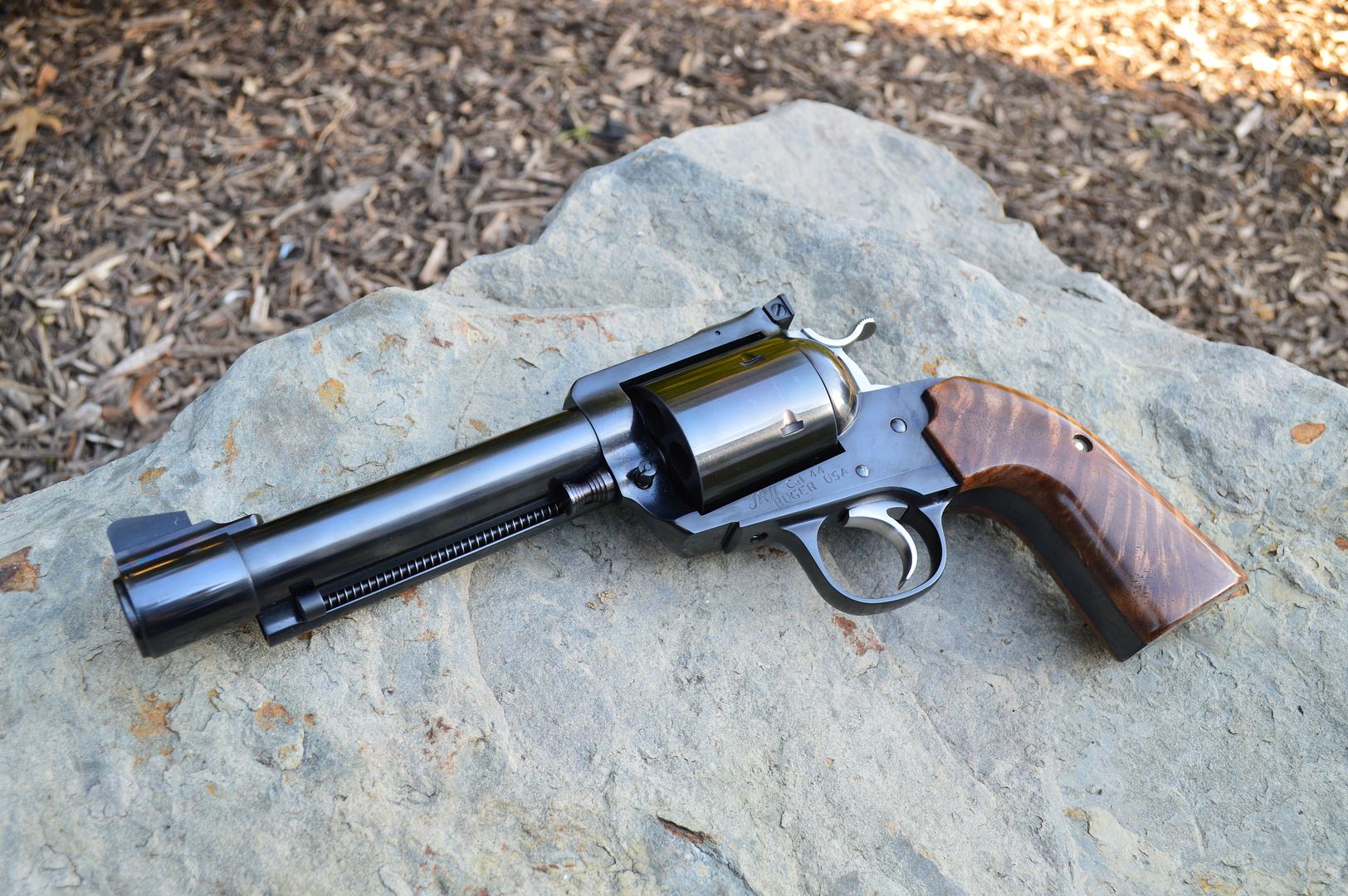Driftwood-
I'm familiar with the Colt SAA and have fired one. How do the S&W guns handle, by comparison? Are the actions reasonably smooth and light, easy to cock, or stiff? How do they handle recoil, compared to a Colt? I find the Colt and Ruger guns to be very natural "pointers." It was almost hard NOT to score killing hits on human silhouette targets at 15 yards when I tried an experiment in pointed fire. That inclued my Super Blackhawk with full .44 Magnum loads.
I've always wondered how a frontiersman might like S&W .44 and .45 Schofield guns, apart from Colt's SAA .45 Colt having a power edge. But I've been afraid to cock one, lest I break an old spring in someone else's gun.
If you lived in the 1880's,which would be your choice as a general use sidearm?
In order to answer your questions, I need to go off topic, which I seem to do a lot.
WARNING: OFF TOPIC ANSWERS! READ AT YOUR OWN RISK!
First off, the Top Break Smiths have it all over a Colt as far as reload time is concerned. With a Colt you must poke the empties out one at a time with the ejector rod through the loading gate. There is no other way to empty it. Then you must reload one at a time through the loading gate. Experience has shown me it is quicker to dump all the empties out, then reload FIVE chambers, not six, rather than poke an empty out and reload that chamber. The reloading mantra for a Colt is load one, skip one, load four more, bring the hammer to full cock and lower it on an empty chamber. I NEVER load a Colt, or a Colt replica with six rounds, it is not safe.
With a Top Break Smith you pop the latch, and swing down the barrel. The ejector will pop all the empties out and you will be staring at empty chambers, ready to reload. In theory anyway. The ejector spring snaps the ejector back down as the barrel nears the end of its rotation. In fact, sometimes an empty shell will not be ejected but will slip under the ejector. This is a real pain in the butt, you have to hold the ejector up while trying to wiggle the offending shell out from under it. I hate doing this, the ejector is digging into my thumb, and I worry about the 135 or so year old braze that secures the ejector to the ejector rod coming loose. So in practice, when I swing the barrel down on a Smith I also rotate the gun to the side, so the barrel is pointing ever so slightly up, giving the ejector a gravity assist to prevent empties from slipping under the ejector. This practice will raise hell at a CAS match because it means I am breaking the 170 rule and am sweeping anybody to my left with the muzzle of the gun. Even though the gun is broken open and cannot fire. Luckily, we seldom have reloads on the clock any more, so I limit this activity to the unloading table where I am able to do it discreetly.
Bottom line, if one is concerned about convenience of reloading, a Smith Top Break beats a Colt hands down. The chambers are all ready to receive fresh ammo, I load five, aligning the empty chamber with the bore as I close the gun.
The actions of a Smith Top Break vs a Colt are very different. The hammer of a Colt goes through about the same arc to cock it as a Smith, but the lever arm of the Colt hammer is much longer, so if the springs have the same resistance, it will be easier to cock the Colt. More leverage. Also, the hammer spurs of the two brands are very different. The hammer spurs of the Smiths point almost straight up. The hammer spur of the Colt, not so much. In addition to this, the Smith design places the hammer further forward from the grip than the Colt design. This means you have to have extremely long thumbs to reach the hammer spur of the Smith to cock the gun without regripping. In addition to that, Smiths have a little quirk. Because the bolt is operated by the trigger and not the hammer, any slight pressure on the trigger will prevent the bolt from withdrawing from the cylinder when cocking the hammer. This means the cylinder will not turn and the hammer cannot be cocked, effectively locking up the gun. While I know I should not be touching the trigger while cocking the hammer, I cannot tell you how many times one of my Top Break Smiths have reminded me about that.
If you look at my photos of the S&W Russian, Schofield, and New Model #3, you will see that they each have a different grip shape. As an aside Roy Jinks once mentioned that after the Clint Eastwood movie 'Unforgiven' came out in 1992, everyone who contacted him about a large frame Top Break S&W revolver assumed it was a Schofield. This is not necessarily so. There were five separate models of revolvers Smith built on the large #3 frame; the American, Russian, Schofield, New Model #3, and the Double Action 44. Among other differences, each of these models had a grip frame of a different shape. I have only posted three, I don't own an American, and the Double Action 44 is not a single action revolver.
Let's start with the Russian. That great, big pointed hump on the grip is there at the insistence of the Russian government. The 1st Model Russian did not have it, it was shaped identical to the American model. But with the 2nd Model Russian you got the big hump and the spur on the trigger guard. The big hump (S&W calls it a knuckle) is there to prevent the gun from rotating in the hand in recoil, which it does very well. But with my hand where it belongs, under the knuckle, my thumb cannot reach the hammer spur. I have to regrip, placing the palm of my hand on the knuckle, in order to reach the hammer. Then I have to regrip again, getting my hand back under the knuckle, to fire. If I fail to get my hand back where it belongs before I pull the trigger, the knuckle digs into my palm in recoil and it hurts. Even with the relatively mild recoil of the 44 Russian round.
The next Top Break that S&W made was the Schofield model. Notice there is no knuckle on the grip, the grip is completely curved. If I hold the Schofield as I normally hold a single action revolver, with my pinky curled under the grip, I cannot quite reach the hammer. If instead I cram my entire hand onto the grip, I can reach the hammer, but I run the risk of the knuckle of my middle finger getting whacked by the trigger guard in recoil. So I keep the pinky curled under the grip. The curved shape of the Schofield grip allows the gun to rotate in the hand in recoil, much like a Colt, bringing the hammer closer to the thumb and making it easy to cock the hammer. But I must then regrip to get my hand where it should be before pulling the trigger.
Now let's look at the New Model #3. This model was first cataloged in 1878. It represents the pinnacle of development with the large frame S&W Top Breaks. This revolver was favored by many in the 19th Century, and target shooters set records with it that are hard to equal today. Notice there is a slight knuckle on the grip, not much different than the grip shape of a modern S&W revolver. Yes, I do have to regrip slightly to cock the hammer, and then regrip to get my hand where it is needed. But if I am in a hurry, and do not regrip, the knuckle is not going to punish me.
OK, let's look at the Colt. In my humble opinion, nothing points like a Colt. Not even the New Model #3, but that is just personal preference. As stated I hold the gun with my pinky curled under the grip because a full house load of Black Powder under a 250 grain bullet creates a stout recoil, and if I have my entire hand crammed onto the grip, the trigger guard WILL whack my knuckle and it WILL hurt. Trust me on this. Curling the pinky under the grip allows me to open up a space of about 1/4" between the trigger guard and my knuckle, so I do not get whacked. Because of the geometry of the grip and the hammer, I have no problem reaching the hammer when I hold the gun this way. I probably do allow the gun to rotate a bit in my hand in recoil, cocking the hammer while the gun is pointed up, I regrip slightly while bringing the gun down to get my hand where I want it for the next shot.
Regarding springs, Colts come from the factory with a very stiff main spring. When I bought that 7 1/2" Colt about 12 years ago it was a bear to cock the hammer. I had a gunsmith go over the gun, smoothing everything and replacing the main spring with a lighter one. It is now a joy to work the action, but it was not always like that. The main springs have been relplaced in both my Schofield and my Russian, making them smooth and easy to cock, despite the inconvenient geometry. The New Model #3 still has its original springs, and it is a bit stiff to cock the hammer.
Regarding ammunition, I only fire these guns with Black Powder. The original load for the 45 Colt was a 250 grain bullet over about 40 grains of Black Powder. The Army shortly reduced that load to only 30 grains of powder under a 250 grain bullet because of the heavy recoil, and the iron, yes iron, cylinders of some of the very early guns did not do well with 40 grains of powder. Commercial loads probably carried about 37 or 38 grains of Black Powder because the balloon head brass did not have quite as much powder capacity as the early folded rim, copper cases. My load in 45 Colt is a 250 grain bullet over about 32 grains of FFg. This is because modern solid head brass has less powder capacity than the old balloon head cases, and that is as much powder as I can stuff in without compressing the charge more than I really want to. Even so, it is a stout load. The original loading of the 45 Schofield cartridge was a 230 grain bullet over about 28 grains of Black Powder. My loads are a 200 grain bullet over about 28 grains of FFg, so about the same amount of powder as the originals, but a lighter bullet. Lastly, the original load for the 44 Russian cartridge was a 275 grain outside lubed bullet over 23 grains of black powder. Later, this load was modified to an inside lubricated 246 grain bullet over 23 grains of Black Powder. My 44 Russian load is a 200 grain bullet over approximately 19.5 grains of FFg.
So. Getting back to the original question, and realizing that not everybody in the West in the 1880s carried a big 44 or 45 caliber revolver, if I felt the need to carry a big belt revolver, it would be a toss up between the slower loading but more powerful and easier pointing Colt, and the quicker reload time with the less powerful Schofield or New Model #3. I most definitely would not be carrying a Russian, not if I could help it. Probably if I was in law enforcement and felt I might be in a gunfight that lasted more than ten seconds, I would go for the New Model #3 chambered for 44 Russian. If I made my living from a horse, I would probably go with the Colt. If I lived in town and made my living in a profession that allowed me to wear a coat with big pockets, I would probably conceal a 38 caliber pocket pistol in a pocket.
END OF OFF TOPIC ANSWER, IT IS NOW SAFE TO RESUME READING THIS THREAD.

